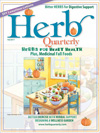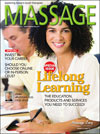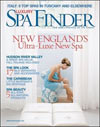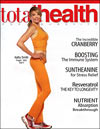Tap dancing and training wheels
It was an odd juxtaposition: an advanced Reiki class in one room, a children's tap-dancing class in the next. As the organizer of the Reiki class, I knew I'd learned a lesson when I heard the first tap-tap-tapping sound come through the wall behind me. I made a quick mental note to book a quieter space next time, but later I realized there were some larger lessons involved as well.
When the instructor, visiting teacher Frans Stiene of the International House of Reiki in Australia, told the Shinpiden class that the distractions actually were helpful in what we were learning, I assumed he was simply being gracious. But over and over, he made the point that we have to do our practice in the real world. New York City is notoriously noisy, but there are distractions anywhere, even in a quiet forest. Indeed, I recalled that when I first took the class in a Chicago massage school, I found myself distracted by the sound of ticking clocks.
Later, it dawned on me that despite our differences, both those classes had something in common: we both were being taught to practice, practice, practice, and repeat, repeat, repeat. There is no other way to learn either Reiki or tap dancing -- or most anything else for that matter.
Frans is the co-author, with his wife Bronwen, of four acclaimed books: The Reiki Sourcebook, The Japanese Art of Reiki, The A-Z of Reiki, and Your Reiki Treatment, as well as the Reiki Techniques Card Deck. The Stienes also co-host The Reiki Show podcast.
This was my third time in the Shinpiden class, as I've sponsored it twice since I first took it, and I have been working with the traditional Japanese Reiki meditative practices Frans teaches every day for a year now. Even so, in experiencing the class again, I learned from another perspective the value of practice, practice, practice, and repetition, repetition, repetition.
I wrote a little piece here last year after my first time in the class, called, "Would you like a cookie?" about the importance of simply offering Reiki to our clients, rather than trying to stuff it into them.
Most Reiki practitioners outside Japan, and many within Japan, have been trained only in the Western branch of the tradition, which passed from founder Mikao Usui to Dr. Chujiro Hayashi to Hawayo Takata. The International House of Reiki training goes back to some of Usui's other students, and gives us a different -- but not new -- way of looking at, and practicing, the system of Reiki, stripped of many of the barnacles that became attached as the practice got farther and farther from its origin. Not that there's anything wrong with the Ayurvedic, Native American and other practices that are often taught as Reiki today -- they're just not part of traditional Japanese Reiki. Although that's the style of practice that "resonates" (as they say) for me, I realize I'm in the minority of Reiki practitioners worldwide, so I am not saying that what I prefer is better in general. It's just what I prefer to practice and teach.
Another point Frans made repeatedly during the class -- and this applies to all branches of Reiki as well as many other practices -- is that some of the tools we learn in Reiki are like training wheels on a bicycle. Once we get to the point where we're pedaling and balancing on our own, we can ride without them. If we keep depending on them, we might never move past needing them.
Lessons learned, I booked a quieter space not only for future classes but for the New York Reiki Dojo's weekly practice sessions. The first Monday evening practice session in our new space will be November 5, and the first Shoden (Level 1) class will be November 10 and 11, followed by an Okuden (Level 2) class December 8. On Sunday, December 9, we'll open the doors of the dojo to visitors, and if you're in the area you're invited to drop by.
Speaking of practice, a couple of weeks ago I told you about my own personal Reiki practice. I asked you to respond by telling us about yours, and Reiki Master Kim Fleisher of The Reiki School and Clinic in Philadelphia was the first to reply:
My Daily Practice
Thanks, Kim. Who's next? Tell us about your personal Reiki practice by adding a comment to this post on our web site, or by emailing editor@thereikidigest.com.
Moving from the subject of personal practice to professional practice, every professional practitioner needs insurance. I get mine through the International Association of Reiki Professionals, and readers of The Reiki Digest can get $10 off on an IARP membership by using Promo Code TRD63. Insurance plans are available for the United States and Canada, and will soon be available in Australia and the United Kingdom.
The IARP has also just opened up its monthly publication, The Reiki Times, to anyone who wants to subscribe -- previously it was available only to members. Subscriptions begin at $49 a year for the online version, $99 a year for a print version.
Let's move on to this week's Reiki Roundup, which begins back on Japan's Mt. Kurama -- the legendary birthplace of Reiki. Special Correspondent Michelle Shinagawa has been telling us about her visit there this past spring, and this week she tells us about the mandala called Kon Gou Shou in front of the main temple there.
In other Reiki-related news this week, Reiki is seen as a sign of gentrification in an article in the UK's New Statesman.
Can Reiki help students deal with the stress of exams? An article in Canada's McGill Tribune says maybe so.
Reiki gets a mention in an online op-ed piece titled, "Single Payer Health Care Works in Italy."
In Lancashire in the UK, we find a farmer turned Reiki practitioner.
And just in time for Halloween, we meet a Reiki practitioner who lives in a haunted house in Asbury Park, New Jersey, USA.
In Bangalore, India, 4,000 taxi drivers have been trained in Reiki so far in a program sponsored by technology firms such as Infosys, Hewlett-Packard, and others, in an effort to help them reduce stress.
This week we have two Celeb-Reikies, one living, one dead. Our living Celeb-Reiki is medium and Reiki practitioner Lisa Williams, star of the Lifetime TV series Lisa Williams, Life Among the Dead.
Williams was discovered by this week's other Celeb-Reiki, the late Merv Griffin.
That's it for this week. Wherever you are, whatever style of Reiki you practice, keep practicing!
































0 Comments:
Post a Comment
<< Home